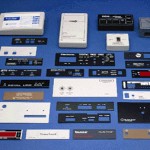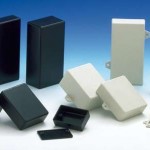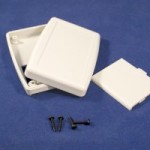Design is something that is always noticed at first sight. It should be elegant, and appealing enough to attract more and more consumers. The very first thing consumers notice is the design of the product. So, it is always good to give priority to this phase as much as possible.
If we discuss about plastic products then they should be designed with extra creativity and innovation since plastic products are more commonly used. Also, these products tend to change their shapes more often. Therefore, they need best designs.
What you need to proceed with a good design? Surely, you need to know the basics and that’s it. All you have to do is to brainstorm about the essentials and there you go. Make sure to think innovatively. Try to introduce something trendy, original and modern while proposing your design.
Today there are many ways to do everything. Similarly, there are some basics to create a good design for plastics as well. You just need to know and apply them in a right direction. Below are the design guidelines and tips for plastic enclosures:
- Design: The very first thing that you should keep in mind is the overall quality of the product. Design is the key factor to be focused. It should be different and more appealing as compared to others.
- Details: You should keep in mind all the details regarding the product. For example a medical product must have different design as compared to the kitchen product. So all the necessary details should be considered.
- Speed: Time is one of the key factors to be managed as well. It all goes well if you jump in with the right thing and right timing. Continue with your product with normal speed. Neither rush to launch it without proper testing nor take too much time as well.
Let’s discuss further about the design guidelines. Following are some phases/processes that should be kept in mind while designing plastic enclosures:
1) Prototype: Once you are finished with the design part, you need to make a sample of the product. This is called the prototype of the product. When you build a prototype, it is then you can test the product for its pluses and minuses. Therefore, you need to design a product that is easy to build and test as well.
2) Mold Construction: Being a designer, you should know the complexities, limitations and boundaries of a molding process. This process is preferably used when a whole lot of plastic products are made.
3) Manufacture: It is the most cost effective phase. Your design should be easy to produce and easily malleable. Since manufacturing is the most costly process, therefore, your design should be fool proof to meet all the challenges of this phase.
4) Assemble and Decorate: Decoration is the phase that needs more attention in your design because in this process product is initially packed and aligned properly.
5) Inspection: It is the process that is done to find out all kinds of flaws and shortcomings of the product and to remove if any.
6) Packaging and Shipping: Packing and shipping is the phase that needs more attention in your design because seeing is believing. Good design and appealing packing attracts more consumers.
Keeping in view the steps involved in the development of enclosures, your design should be flexible enough to cater all the requirements of each phase accordingly. Designs are always important as consumers are attracted towards new designs even more.
Plastics should be designed with extra care in a way that they sustain their shapes in the extreme weather conditions even. At least, they should have the ability to retain their shapes as much as possible.
Besides all these basic guidelines there are few other things as well that should be focused. Like, you need to consider the color factor as well. Suppose you design a plastic enclosure that is looking fabulous in white color. When another color is applied to the same design then it looks not more than a mess.
Similarly, that goes with the size factor as well. One design is flexible enough for small size and completely a loss when it is applied to a larger size.
Along with color and size factor, you should also keep in mind that your design could be flexible enough to be successful, even when there is a slight mixing of any other material with plastic.
Suppose you come to know in the manufacturing phase that blending is essential. In this case, is your design flexible enough to accept this change? So, you have to think in that perspective as well while designing your plastic enclosure.
Conclusively, design is a base and you have to build your product image on it. Better the design, better would be the product image, in short.








